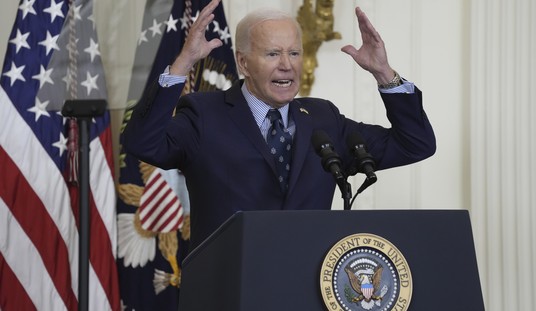What do you call a “representative government” that enjoys the approval of less than one in four of the people it is charged with representing?
Unrepresentative.
In California, legislators continue to attack and restrict the initiative and referendum process that enjoys the support of 75 percent of Golden State citizens, while the representatives themselves receive only 23 percent approval. These so-called “representatives” not only fail to act for the people, they also oppose allowing the people to act for themselves.
The straw-man arguments made by politicians and political elites against the power of citizens to act directly via ballot initiatives are deeply instructive. Ronald George, the Chief Justice of the State Supreme Court, traveled the nation decrying the over 500 amendments to California’s 1879 constitution and positing that something had to be done to rein in the initiative process. Boy, that is quite a few. Neither his honor, nor the media coverage of his remarks, bothered to mention that less than one in ten of those amendments came through citizen initiatives.
Legislators disparage the “ballot-box” budgeting by voter initiatives that supposedly ties their otherwise fiscally responsible hands. But a report by the Center for Governmental Studies in Los Angeles found that 83 percent of ballot measures that spent money between 1988 and 2009 were placed on the ballot by legislators, not citizens. As Bob Stern, the Center’s president, awkwardly told a joint legislative committee, “Most of the ballot-box budgeting has come from you.”
Recommended
Even George Will argued in a recent column that “The Legislature has limited or no control over as much as 85 percent of revenue.” That might be a problem, if it were true. It’s not. A recent study by University of Southern California Professor John Matsusaka found that one initiative, Prop 98, accounts for almost all of the state’s voter-initiative-mandated spending. The measure sets a spending floor for K-12 and community colleges amounting to 40 percent of the state budget. Neither Republican nor Democratic legislators are looking to cut education spending below this level. Public education spending reduction is not on many campaign planks. But if politicians did want to reduce that base level, they certainly could, as Proposition 98 specifically authorizes the legislature to suspend the spending requirements if they deem it necessary.
As Professor Matsusaka put it, “Without Proposition 98, only 4 percent of the budget is locked in by initiatives.” As Mr. Will and most legislators can no doubt deduce,
4 < 85
Let’s not forget the 2009 report of the non-partisan Legislative Analyst’s Office, which debunked the notion that legislators’ hands were tied on budget matters. “In reality, however, the Legislature remains in control of the vast majority of state spending,” the report found, and went on to state, “Such decisions are often more restricted by the lack of political consensus as opposed to any structural budgetary constraint.”
California’s initiative process is not the problem; in fact, it’s the solution. Even many folks opposed to the initiative process recognize that it comprises the only viable path to much needed reform, as any reform measure proposed by such unpopular legislators would be considered fatally suspect.
The problem is the rest of governmental decisions, those made not through the democratic check of a citizen initiative or referendum but through so-called representative government. Add to these decision those made by the administration of that government, which is supposed to be checked and balanced by the people’s representatives.
It’s a whole mess of bad choices.
In a representative system, the failure of government just might be a failure of adequate representation. As those who do some simple math can attest, California's legislature strains the very concept. Every member of the State Senate must speak for over a million Californians and each member of the Assembly for more than half a million. Seven U.S. states have a smaller total population than a single California senate district.
As Rescue California, a new group urging the creation of more districts with smaller populations, states on its website, “California has 40 Senators and 80 Representative in its Assembly, the same number as it had in 1879, when the state had under 1,000,000 residents. It now has over 37 million people . . .”
Such gargantuan districts make political competition difficult — the cost of getting into the arena is often prohibitive. Walking one’s district and knocking on doors would take years, so the power of paid advertising, direct mail and the endorsements and turnout activities of the state’s most powerful interests cannot help but dominate. Overwhelmingly.
Once in office, the perch is so lofty that only the state’s term limits law seems capable of up-ending incumbents.
Unfortunately, across the country there has been a push to reduce the size of legislatures, rather than increase them. The idea is that fewer legislators will save taxpayers money. But this intuition is misguided, as California demonstrates with a vengeance.
Large population districts are nearly universal, with only a few New England states blessed with districts of reasonable size. But the populations of California’s districts dwarf those in other states.
Sadly, the idea that smaller districts will give citizens greater representation is still not on the public’s radar screen. But the seriousness of California’s problem with unrepresentative government has convinced thoughtful observers from across the political spectrum that increasing the size of California’s tiny assembly is a necessary prerequisite to solving the crisis in state government.
A bipartisan, non-partisan, transpartisan grassroots campaign is desperately needed. And may be on the cusp. Liberals Joe Mathews and Mark Paul in their book California Crack-Up call for increasing the size of the legislature. Republican John Cox, the leader of Rescue California, calls for a much more dramatic increase.
The solution to a failure of representation is greater representation. But since increasing representation will weaken individual representatives’ power, such a reform would no doubt be opposed by powerful legislators and political power brokers.
It can only succeed through the state’s citizen initiative process.

























Join the conversation as a VIP Member